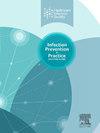Development and impact of a structured training module for surgical painting and draping among interns
IF 1.9
Q3 INFECTIOUS DISEASES
引用次数: 0
Abstract
Background
Surgical site infections (SSIs) are a global concern affecting patient recovery, prolonging hospital stay and raising healthcare costs.
Aim
To address this, a structured training module was implemented to enhance the efficacy of surgical painting and draping among the interns, reducing SSI risk.
Methods
A questionnaire was distributed to 194 interns, covering fundamental inquiries on SSIs, aseptic practices and an assessment of the participant's knowledge regarding preoperative skin preparation and draping. Students then attended lectures, demonstrations, hands-on sessions and an operating room workshop dedicated to surgical painting and draping techniques. Proficiency was evaluated through a follow-up questionnaire.
Results
There was a significant increase in the percentage of good score from 27.6% to 86.9%. A comparative analysis of surgical site infection (SSI) rates at our institution was performed before and after integrating a cohort of trained clinicians.
Conclusion
Although a significant reduction in SSI rates was observed, it cannot be definitively attributed solely to the introduction of the trained personnel. Nonetheless, the findings underscore the potential impact of rigorous training in aseptic techniques on reducing SSI incidence.
在实习生中进行外科绘画和悬垂的结构化培训模块的开发和影响
手术部位感染(ssi)是影响患者康复、延长住院时间和提高医疗成本的全球性问题。为了解决这个问题,我们实施了一个结构化的培训模块,以提高实习生的手术绘画和悬垂效果,降低SSI风险。方法对194名实习生进行问卷调查,内容包括ssi基本知识、无菌操作、术前皮肤准备和悬垂知识的评估。然后,学生们参加了讲座、示范、实践课程和手术室工作坊,专门学习手术绘画和悬垂技术。通过随访问卷评估熟练程度。结果优良率由27.6%提高到86.9%。对我院外科手术部位感染(SSI)率进行了对比分析,并在整合一组训练有素的临床医生前后进行了比较分析。结论:虽然观察到SSI发生率显著降低,但不能完全归因于培训人员的引入。尽管如此,研究结果强调了严格的无菌技术培训对减少SSI发生率的潜在影响。
本文章由计算机程序翻译,如有差异,请以英文原文为准。
求助全文
约1分钟内获得全文
求助全文
来源期刊

Infection Prevention in Practice
Medicine-Public Health, Environmental and Occupational Health
CiteScore
4.80
自引率
0.00%
发文量
58
审稿时长
61 days
 求助内容:
求助内容: 应助结果提醒方式:
应助结果提醒方式:


